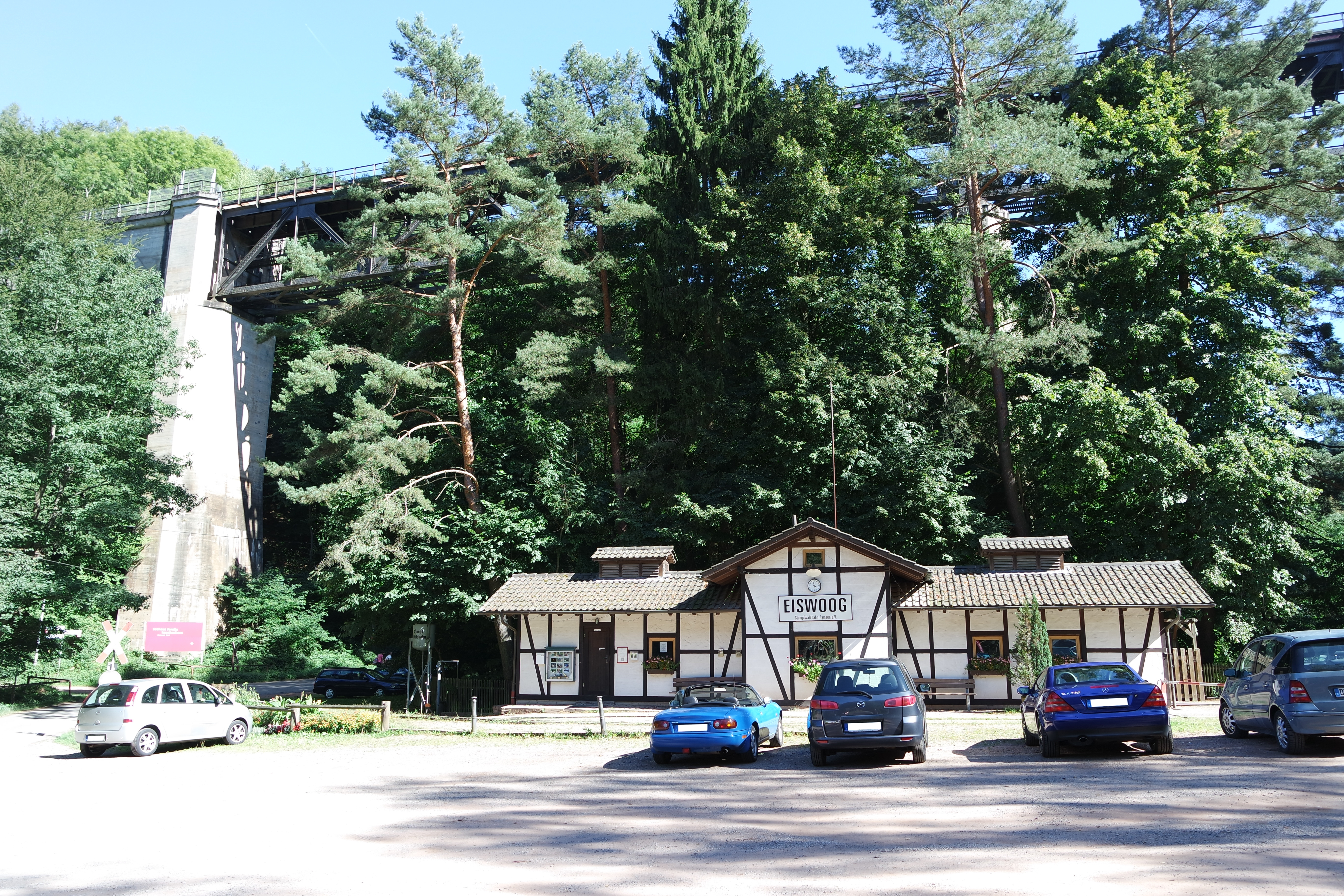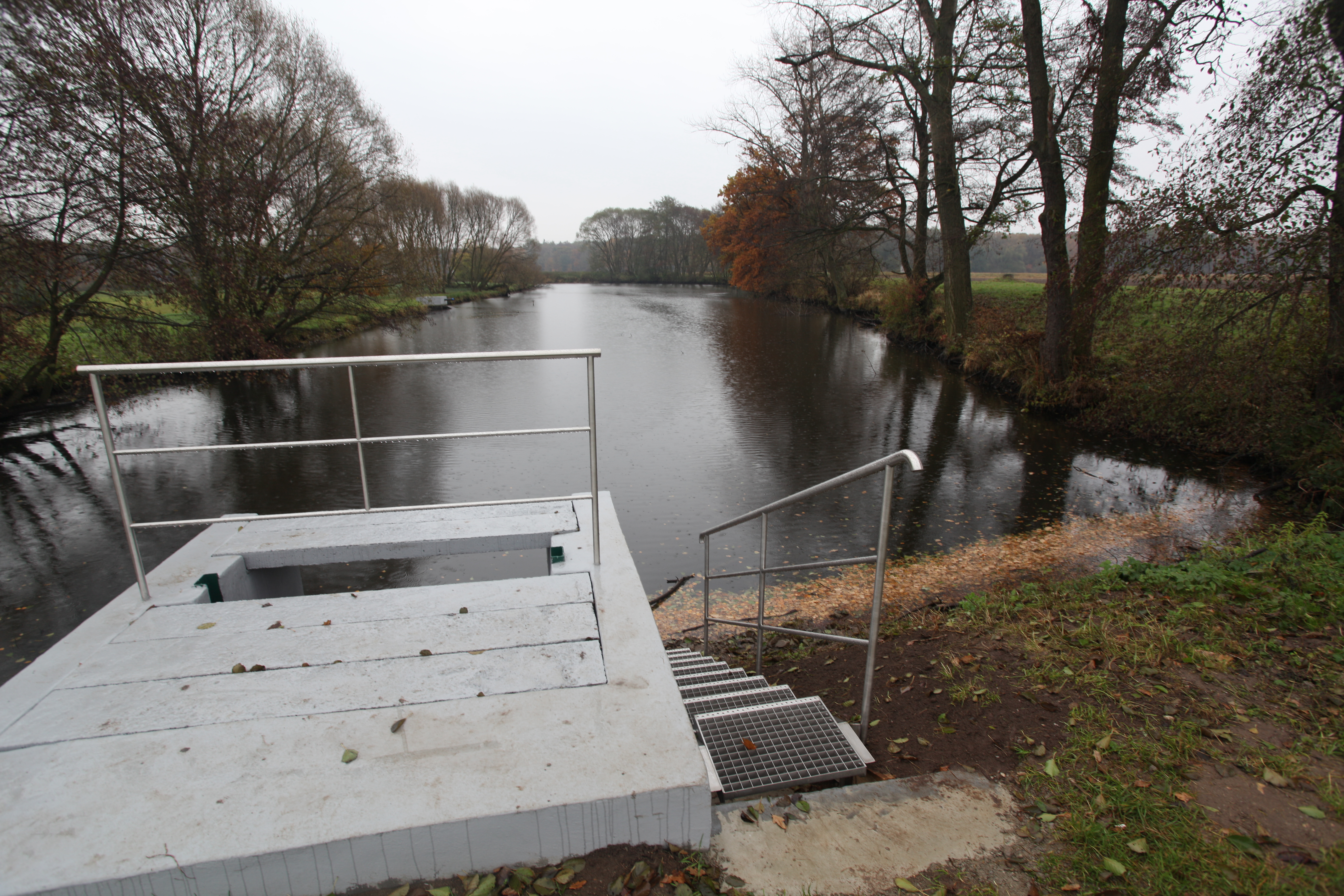|
Tonwaren-Industrie Wiesloch
(TIW AG, originally , abbreviated ) was a brickworks making which existed in Wiesloch, Germany between 1895 and 1989. It was one of the largest and most significant factories in Germany. The factory was located just north of Wiesloch-Walldorf station and was the largest employer in Wiesloch. Raw clay material was excavated from a clay pit in the forest on the north-west side of Wiesloch. This clay material was located at an elevation of 120 metres above sea level within the Upper Rhine Graben. The factory contained one of many industrial 600 mm gauge railways in Germany. Use of the narrow-gauge trains to fetch material from the clay pit finished in 1979. Since 2001 the Wiesloch Feldbahn and Industrial Museum has been based at part of the north end of the site, and since 2016 the Leimbach Park has been built on the south end of the site, with the rest of the area transformed into an industrial zone. Location The brickworks was situated in a concentrated node of industry ac ... [...More Info...] [...Related Items...] OR: [Wikipedia] [Google] [Baidu] |
Wiesloch
Wiesloch (, locally ; South Franconian: ''Wissloch''), is a town in northern Baden-Württemberg, Germany. It is situated 13 kilometres south of Heidelberg. After Weinheim, Sinsheim and Leimen it is the fourth largest town in the Rhein-Neckar-Kreis. It shares Wiesloch-Walldorf station with its neighbouring town Walldorf. Also in the vicinity of Wiesloch are Dielheim, Malsch (bei Wiesloch), Mühlhausen, Rauenberg and Sankt Leon-Rot. Wiesloch's population grew to more than 20,000 when the administration of the area was reorganised in the 1970s. Wiesloch became a ''Große Kreisstadt'' on 1 January 1973, when Altwiesloch, Baiertal, Frauenweiler and Schatthausen were amalgamated with Wiesloch to form the present municipality. History The settlement that is now Wiesloch town centre originated during the expansion of silver mining in the vicinity in the 10th century. Fossil site The fossil remains of the oldest hummingbird found to date, ''Eurotrochilus inexpectatus'', were found ... [...More Info...] [...Related Items...] OR: [Wikipedia] [Google] [Baidu] |
Leimbach (Rhein-Neckar)
Leimbach is a river of Baden-Württemberg, Germany. It passes through Wiesloch and Schwetzingen, and flows into the Rhine in Brühl. Between the cities of Wiesloch and Walldorf the river flows through the Leimbach Park linear-park close to Wiesloch-Walldorf station before flowing northwards between the Mannheim–Karlsruhe–Basel railway and Wiesloch Feldbahn and Industrial Museum. See also *List of rivers of Baden-Württemberg A list of rivers of Baden-Württemberg, Germany: A * Aal * Aalbach * Aalenbach * Ablach * Ach *Acher * Adelbach *Aich * Aid * Aischbach, tributary of the Kinzig * Aischbach, tributary of the Körsch *Aitrach, tributary of the Danube *Aitrach, tr ... References Rivers of Baden-Württemberg Rivers of Germany {{BadenWürttemberg-river-stub ... [...More Info...] [...Related Items...] OR: [Wikipedia] [Google] [Baidu] |
Orenstein & Koppel
Orenstein & Koppel (normally abbreviated to "O&K") was a major Germany, German engineering company specialising in railway vehicles, escalators, and heavy equipment. It was founded on April 1, 1876 in Berlin by Benno Orenstein and Arthur Koppel. Originally a general engineering company, O&K soon started to specialise in the manufacture of railway vehicles. The company also manufactured heavy equipment and escalators. O&K pulled out of the railway business in 1981. Its escalator-manufacturing division was spun off to the company's majority shareholder at the time, Krupp, Friedrich Krupp AG Hoesch-Krupp, in 1996, leaving the company to focus primarily on construction machines. The construction-equipment business was sold to New Holland Construction, at the time part of the Fiat Group, in 1999. Founding and railway work The Orenstein & Koppel Company was a mechanical engineering, mechanical-engineering firm that first entered the railway-construction field, building locomotives a ... [...More Info...] [...Related Items...] OR: [Wikipedia] [Google] [Baidu] |
Builder's Plate
A builder's plate is usually a metal plate that is attached to railway locomotives and rolling stock, bogies, construction equipment, trucks, automobiles, large household appliances, bridges, ships and more. It gives such information as the name of the manufacturer, the place and country of manufacture, the model number, the serial number, as well as the date of manufacture or date of fabrication of the item or unit. Gallery Image:New South Wales Government Locomotive No. 1c.jpg, New South Wales Government Railways Locomotive No. 1. Builders plate 958 File:Kerr Stuart Builder's plate 1327.jpg, Kerr, Stuart and Company File:Lima builder's plate.jpg, Lima Locomotive Works File:NSWGR AD60 Class Locomotive 6040 d.jpg, New South Wales AD60 class locomotive Beyer, Peacock and Company. builder's plate. File:SAR Class GMAM 4140 (4-8-2+2-8-4) BP.jpg, BP and NBL works plate off (South African Class GMA 4-8-2+2-8-4) no. 4140. File:GNR 1744 constructors plate.jpg, NBL builder's plate. Fi ... [...More Info...] [...Related Items...] OR: [Wikipedia] [Google] [Baidu] |
Stumpfwaldbahn Lok
The Stumpfwald Railway (german: Stumpfwaldbahn) is a Narrow gauge railway, narrow gauge heritage railway that has operated since 1996 in the Stumpfwald, a woodland area in the north of the Palatine Forest in the municipality of Ramsen (Pfalz), Ramsen. Course The western end of the Stumpfwald Railway starts at Eiswoog railway station, next to the Eiswoog, eponymous lake. Some years after the line opened, a railway halt was built on the nearby (standard gauge) Eis Valley Railway, which also bears the name ''Eiswoog''. This halt is served by most of the trains on the Eis Valley Railway on Sundays and holidays. On weekdays, however, services on the Eis Valley line ends in Ramsen (Pfalz), Ramsen. The original eastern operating point of the Stumpfwald Railway was ''Bockbachtal'' station, but this was moved further to the east as part of the extension of the line in 2007 and has been converted to a passing loop, which is now the halfway point on the way to Ramsen. Just before Rams ... [...More Info...] [...Related Items...] OR: [Wikipedia] [Google] [Baidu] |
Jockgrim
Jockgrim is a municipality in the district of Germersheim, in Rhineland-Palatinate, Germany. It is situated on the left bank of the Rhine, approximately 15 km north-west of Karlsruhe. Jockgrim is the seat of the ''Verbandsgemeinde'' ("collective municipality") Jockgrim. Jockgrim station is on Schifferstadt–Wörth railway and is served by the Karlsruhe Stadtbahn The Karlsruhe Stadtbahn is a German tram-train system combining tram lines in the city of Karlsruhe with railway lines in the surrounding countryside, serving the entire region of the middle upper Rhine valley and creating connections to neighbou .... In 1965, Jockgrim celebrated the 700th anniversary of the old part of town: Hinterstadtl. This picturesque area has a bi-annual festival called Hinterstadtl Fest which takes place on the first weekend of September. In 2015 they were celebrating the 750th anniversary. Facts Jockgrim had a little scene in the movie "Buffalo Soldiers". The scene when a tank runs o ... [...More Info...] [...Related Items...] OR: [Wikipedia] [Google] [Baidu] |
German Papiermark
The Papiermark (; 'paper mark', officially just ''Mark'', sign: ℳ) was the German currency from 4 August 1914 when the link between the Goldmark and gold was abandoned, due to the outbreak of World War I. In particular, the Papiermark was the currency issued during the hyperinflation in Germany of 1922 and 1923. History From 1914, the value of the mark fell. The rate of inflation rose following the end of World War I and reached its highest point in October 1923. The currency stabilized in November 1923 after the announcement of the creation of the Rentenmark, although the Rentenmark did not come into circulation until 1924. When it did, it replaced the Papiermark at the rate of 1 trillion (1012)-ℳ to RM1. On 30 August 1924 the Rentenmark was replaced by the Reichsmark. In addition to the issues of the government, emergency issues of both tokens and paper money, known as ''Kriegsgeld'' (war money) and ''Notgeld'' (emergency money), were produced by local authorities ... [...More Info...] [...Related Items...] OR: [Wikipedia] [Google] [Baidu] |
Grand Duchy Of Baden State Railway
The Grand Duchy of Baden was an independent state in what is now southwestern Germany until the creation of the German Empire in 1871. It had its own state-owned railway company, the Grand Duchy of Baden State Railways (''Großherzoglich Badische Staatseisenbahnen or G.Bad.St.E.''), which was founded in 1840. At the time when it was integrated into the Deutsche Reichsbahn in 1920, its network had an overall length of about . History Foundation Baden was the second German state after the Duchy of Brunswick to build and operate railways at state expense. In 1833 a proposal for the construction of a railway from Mannheim to Basle was put forward for the first time by Mannheim businessman, Ludwig Newhouse, but initially received no support from the Baden state government. Other proposals too by, for example Friedrich List, were unsuccessful at first. Not until the foundation of a railway company in the neighbouring French province of Alsace, for the construction of a line from ... [...More Info...] [...Related Items...] OR: [Wikipedia] [Google] [Baidu] |
Settling
Settling is the process by which particulates move towards the bottom of a liquid and form a sediment. Particles that experience a force, either due to gravity or due to centrifugal motion will tend to move in a uniform manner in the direction exerted by that force. For gravity settling, this means that the particles will tend to fall to the bottom of the vessel, forming sludge or slurry at the vessel base. Settling is an important operation in many applications, such as mining, wastewater and drinking water treatment, biological science, space propellant reignition, and scooping. Physics For settling particles that are considered individually, i.e. dilute particle solutions, there are two main forces enacting upon any particle. The primary force is an applied force, such as gravity, and a drag force that is due to the motion of the particle through the fluid. The applied force is usually not affected by the particle's velocity, whereas the drag force is a function of ... [...More Info...] [...Related Items...] OR: [Wikipedia] [Google] [Baidu] |


